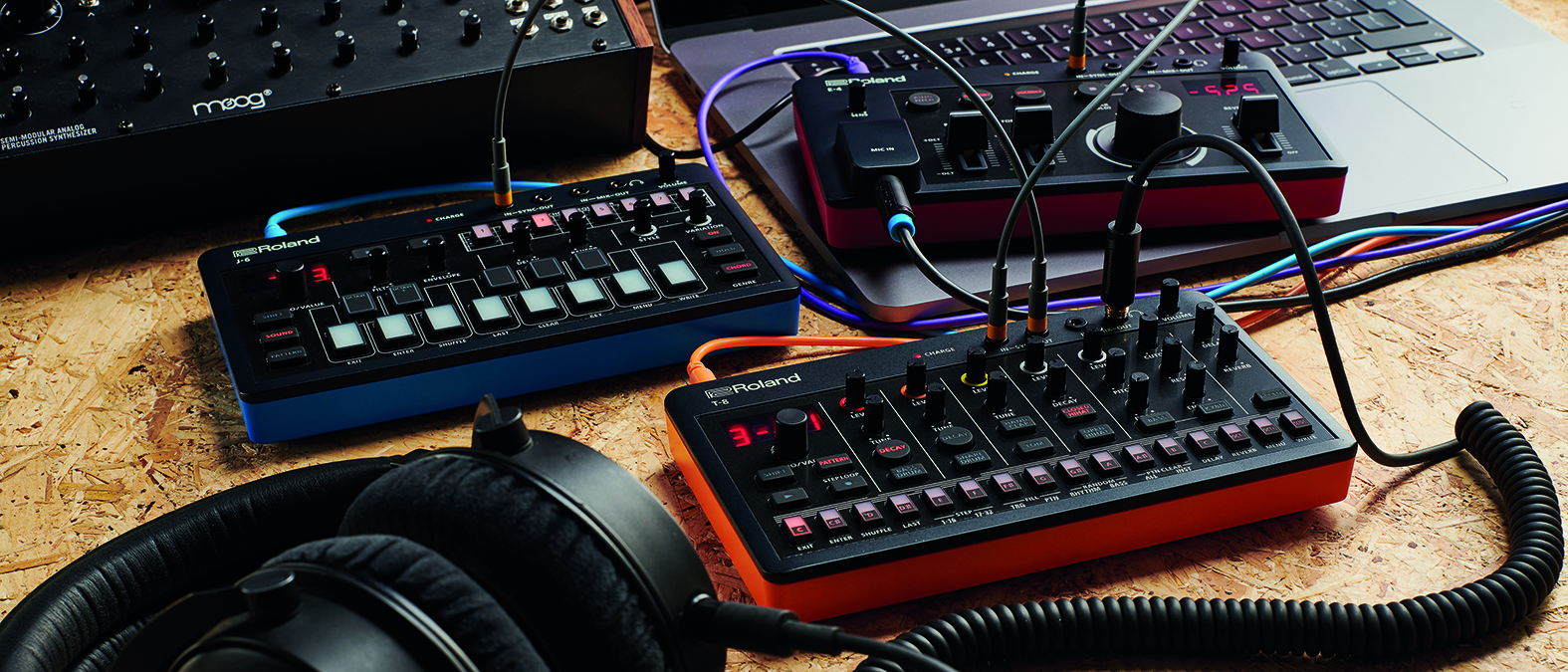MusicRadar Verdict
Pros
- +
Portable and rechargeable.
- +
Comprehensive connectivity including USB, MIDI and Audio In/Out.
- +
The quality of the sound engines.
Cons
- -
T-8 and J-6 would benefit from better screens for editing of menu parameters.
- -
Noise present at audio outputs when powered via USB.
- -
T-8 and J-6: no internal automation of sound parameters; limited MIDI spec.
MusicRadar's got your back
Roland Aira Compact Series: What is it?
Roland hasn’t been shy of revisiting its classics, and this has taken many forms – from hardware to software, targeting specific units, or just distilling parts into entirely new products.
The Aira range with its black and green livery was one of Roland's first attempts to provide realistic recreations. More recently the Boutique range has resurrected the sound of the Jupiter-8, TR-808 and many others.
It is notable however that Roland has stuck with the DSP approach, unlike Korg who has introduced units based around analogue sound generation circuitry (most accessible in the Volca range, where simplicity, small footprint, battery power and low cost have proved a massive draw).
It seems that Roland has been paying attention as the size and price-point of its new Aira compact range seems to show.
T-8 Beat Machine: Performance & verdict
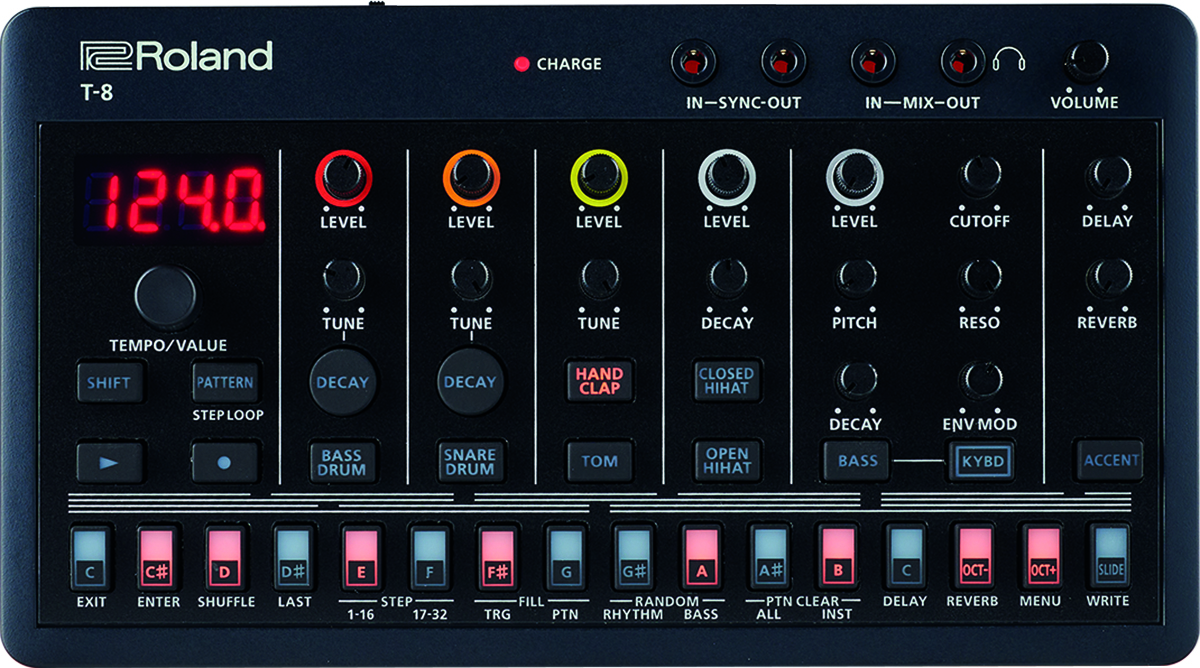
Although the T-8 is diminutive it still pays a slight visual homage to the classic TR-808 drum machine and even embraces some of its sounds and functionality. Let’s start with some of the elements common to this Roland range – the Aira Compact.
As alluded to earlier, they are similar to Korg Volcas in terms of general footprint. A glance along the top of the front panel will perhaps also bring up nods of recognition with its mini-jack Sync In/Out and audio output sockets, diminutive parameter pots and basic 4-character LED display.
Connectivity here also includes an audio input, which will shortly prove its worth when we power up multiple units. This simple piece of functionality means that no external mixer is required as the units can be easily daisy-chained, with one final one providing the master output.
On the back panel you’ll find a USB Type-C port and two further mini-jack sockets for MIDI In/Out. Interestingly, the latter provide an additional way to sync the tempo clocks on multiple units by connecting MIDI Out to In using standard 3.5mm TRS cables.
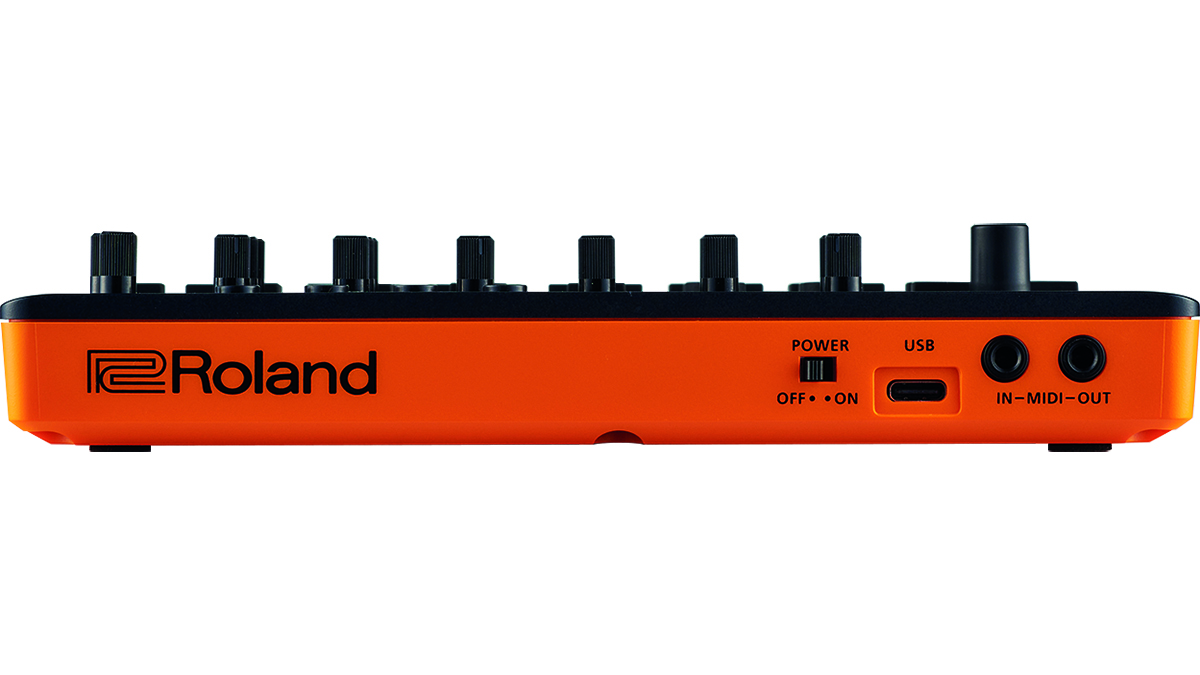
Given the absence of any kind of battery compartment, we initially assumed that the USB connectivity was simply for powering the unit. However, it turns out that the Compacts have their own internal rechargeable power source (which Roland claims will keep you happy for up to 4.5 hours). USB is therefore used to charge the aforementioned battery, but also routes MIDI and audio to/from your chosen external device (Mac, PC, phone etc).
Now we’ve got the formalities out of the way, let’s take a look at some of the specifics offered by the T-8. It’s capable of playing and independently sequencing six drum sounds.
Interestingly, rather than simulating sounds of one particular drum-machine, Roland has chosen to mix it up a bit with a hybrid approach – muddied perhaps by the overlaps or similarities in sound and circuitry between some of Roland’s earlier analogue drum machines. So, the Bass Drum and Snare are taken from the TR-909, the Clap has an 808/909 flavour, the Toms sit in 606/808 territory and the Hats are derived from TR-606.
Further variation is provided by the option of switching between two (subtly different) choices of Tom and changing the Clap to a ‘Noise Tom’ or High Tom.
Front panel controls deal with Tune and Decay parameters where appropriate, though further tweaking is available for some sounds with some menu diving. The main thing to note is that apart from Clap and Toms there is limited scope for making any dramatic changes to the sounds or swapping them for something entirely different.
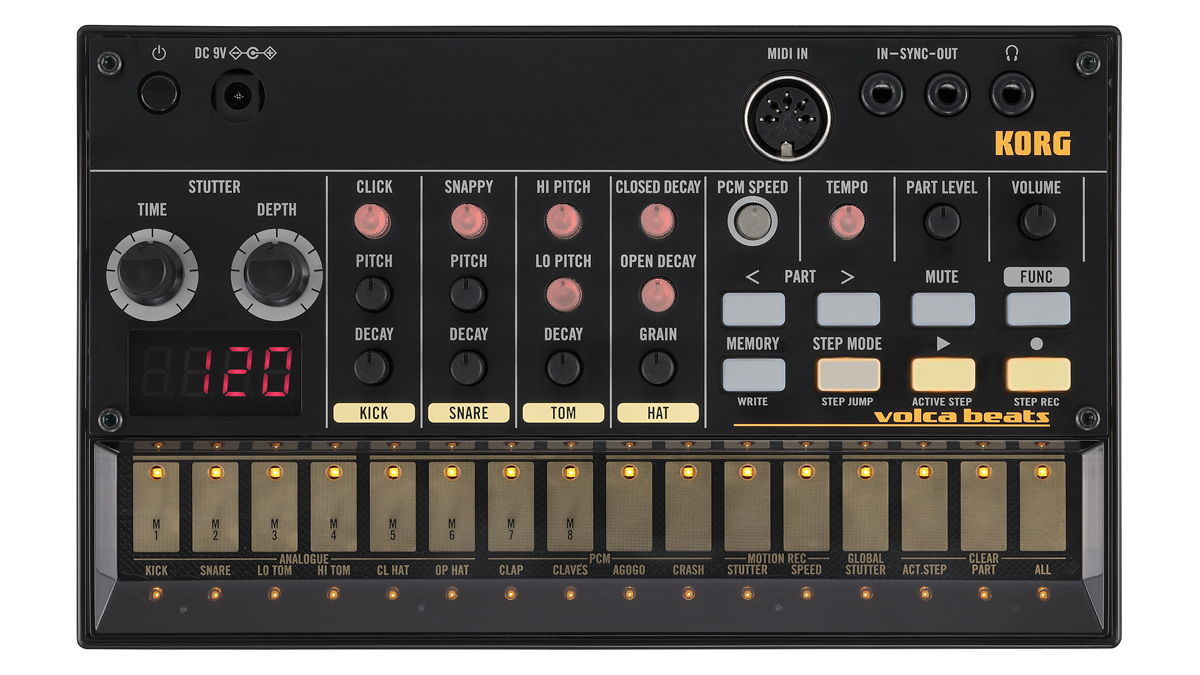
• Korg Volca Beats
One of the first of the Volca range, and still a very alluring portable analogue drum module.
• Korg Electribe EMX2
Larger, pricier, but the EMX2 combines conventional and pattern-based sequencing effectively – and it can run on batteries.
• Roland VT-4
The VT-4 offers many similar feature to the E-4, but offers more pro features such as an XLR mic input and phantom power.
Although the T-8 is referred to by Roland as a ‘Beat Machine’, it has another important feature up its sleeve: a bass section modelled on the fat and squelchy TB-303.
Like the drums, sequences can be created using an X0X-style step-time programming system or in real-time employing the buttons as keys. In the same way that the drum section supports additional features such as sub-steps, flams and variable velocity levels, the bass sequencer also allows you to add accents and slides.
It is a shame, however, that (unlike some of the Korg Volcas that employ ‘Motion Sequencing’) there is no way to automate parameter changes.
There’s a lot to like about the T-8 as the drum and bass engines make for a fun, usable combination. Roland has also seen fit to add interesting extras such as variable probability for each step in the drum sequencer, and ability to generate randomised rhythm and bass patterns.
In fact, there are a bunch of other features buried in this little unit: a ducking sidechain effect can be set individually for each instrument (and the effects) and there is an adjustable overdrive ‘circuit’.
However, these get scant mention in the user manual, and contribute to the more than 40 individual menu items which must be tweaked via the very limited LED display. Though it might have pushed up the cost, a small high-res OLED display would have been a boon here. We found ourselves also having to refer to the manual quite often.
MusicRadar verdict: Great fun and a genuinely useful combo of drums and bass. The whole thing was hampered only by the less than ideal menu system and limited display.
J-6 Chord Synth: Performance & verdict
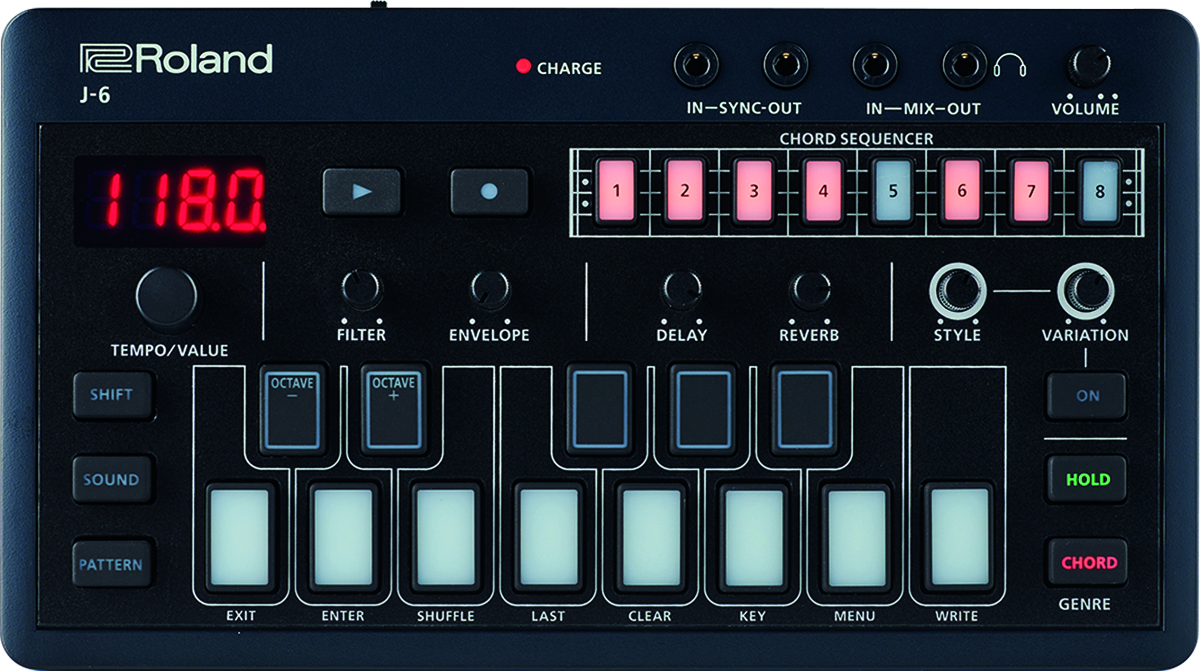
Next we come to the J-6 Chord Synth. In terms of size and connectivity, this sticks to the template set by the T-8, though the front panel this time is predominantly geared towards keyboard-style programming – and there is a noticeable cut-back in terms of parameter controls.
The J-6 is based around a Juno-style synth section combined with a chord sequence and pattern generator. In other words, don’t expect note programming with low-level recording and playback control – the aim here is to be able to create interesting patterns and phrases easily.
In its most basic mode, you select one of the eight steps in the Chord Sequence section and enter up to four notes via the keyboard buttons. Once completed for each step, playing back the sequence results in a series of simple polyphonic triggers to the chosen synth sound. If you’re feeling nimble you can also play notes in real-time, though the more sausage-fingered out there might find this somewhat frustrating.
In Chord Mode, pressing single notes on the keyboard automatically plays or records a chord that conforms to the scale and ‘vibe’ associated with that selected by the ‘Genre’ parameter. There are 100 of these built into the unit, covering everything from synthwave and house to funk, R&B and jazz, and even classical. You’ll need to refer to the manual here, as the display only shows numbers – another case for that OLED display mentioned above?
In this raw state, sequences can lack much in the way of movement or rhythmic interest, and that’s where the Phrase Function comes in. Each step in the chord sequencer can be assigned playback style from a palette of nine broader styles (each with 12 variations).
These cover all kinds of pulses, strums and arpeggios – though, once again, you’ll only be using numbers to find the one you’re after. There are some really nice, functionally useful elements here, but the process of auditioning and tweaking can feel a bit hit-or-miss.
This more serendipitous approach might suit some, but to those used to prodding away on a keyboard or able to get some visual sense of a rhythmic pattern it can feel somewhat fiddly.
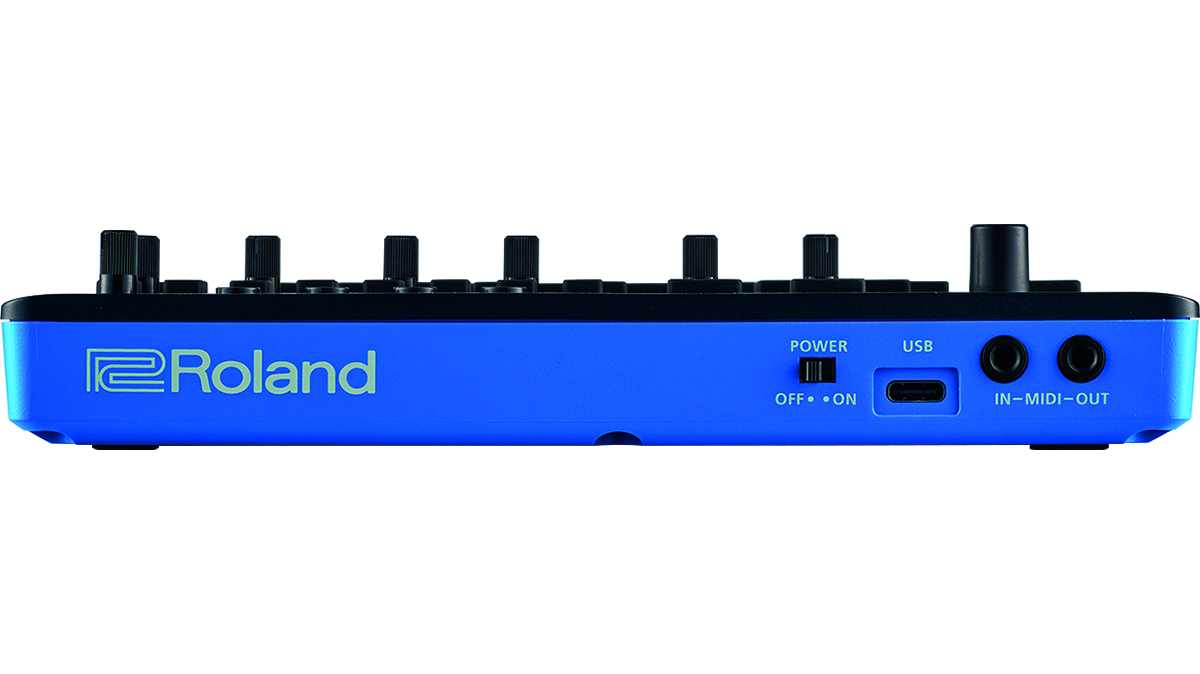
What perhaps makes this worthwhile is the synth engine. Although editing is limited to adjusting filter cutoff and a single envelope control, the 64 sounds included here are immediately engaging, with that familiar Juno-60 synth tone.
The Juno-6/60 was never the most comprehensive in terms of programming or tonal flexibility, but it could consistently deliver sounds that just fit in a track, and the presets here are no exception.
Delay and Reverb help put the finishing touch to the sound, and don’t forget that you can also simply use this as a sound module played via USB or MIDI IN (via an optional TRS to DIN adaptor).
MusicRadar verdict: A fantastic sound engine combined with some engaging automatic sequencing capabilities, though once again limited a little by interface.
E-4 Voice Tweaker: Performance & verdict
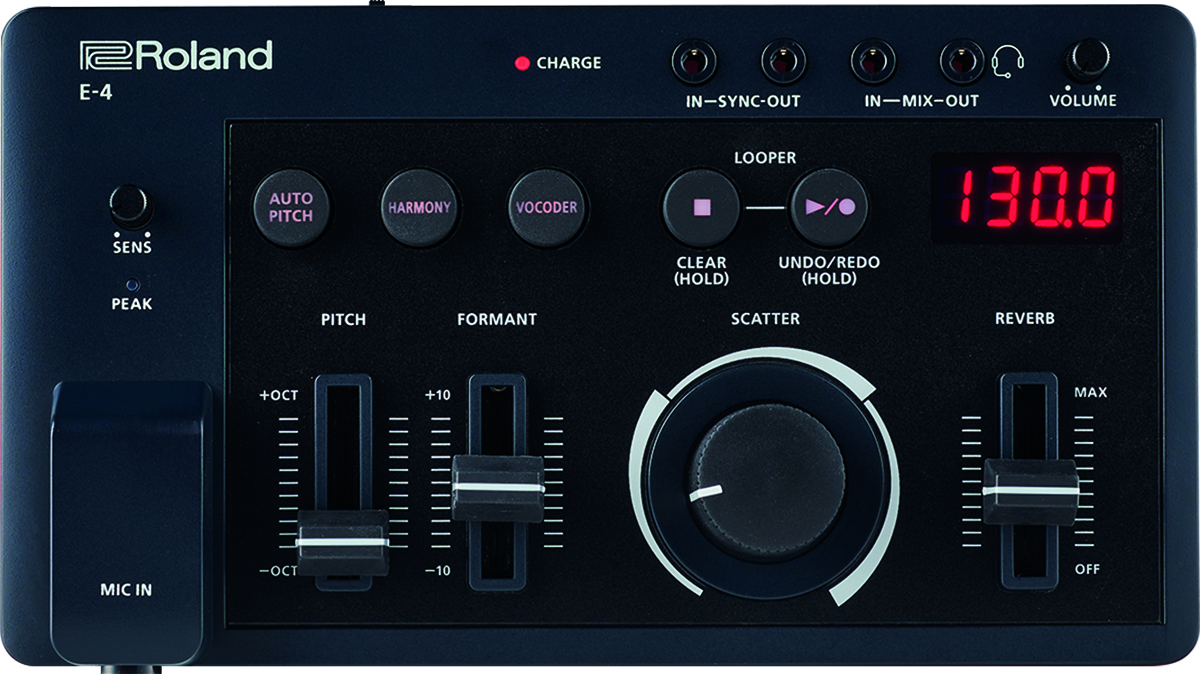
The final member of the debutante AIRA Compact trio is the E-4 Voice Tweaker. Unlike the first two units which handle raw sound generation, the E-4 is an audio processor geared toward live contemporary vocal production duties. This isn’t unusual territory for Roland as anyone familiar with its VT range will know.
The unit takes the mic signal (from the panel jack or headset) and cleans it up via a low cut filter and noise gate. From there it is either processed by the Auto Pitch section (auto-tune plus pitch and formant processing) and fed to a 4-part harmony generator or directly into the Vocoder.
After these comes a Looper and the Scatter (glitch/repeat effect). Finishing touches can then be added with a selection of simple, switchable stereo effects.
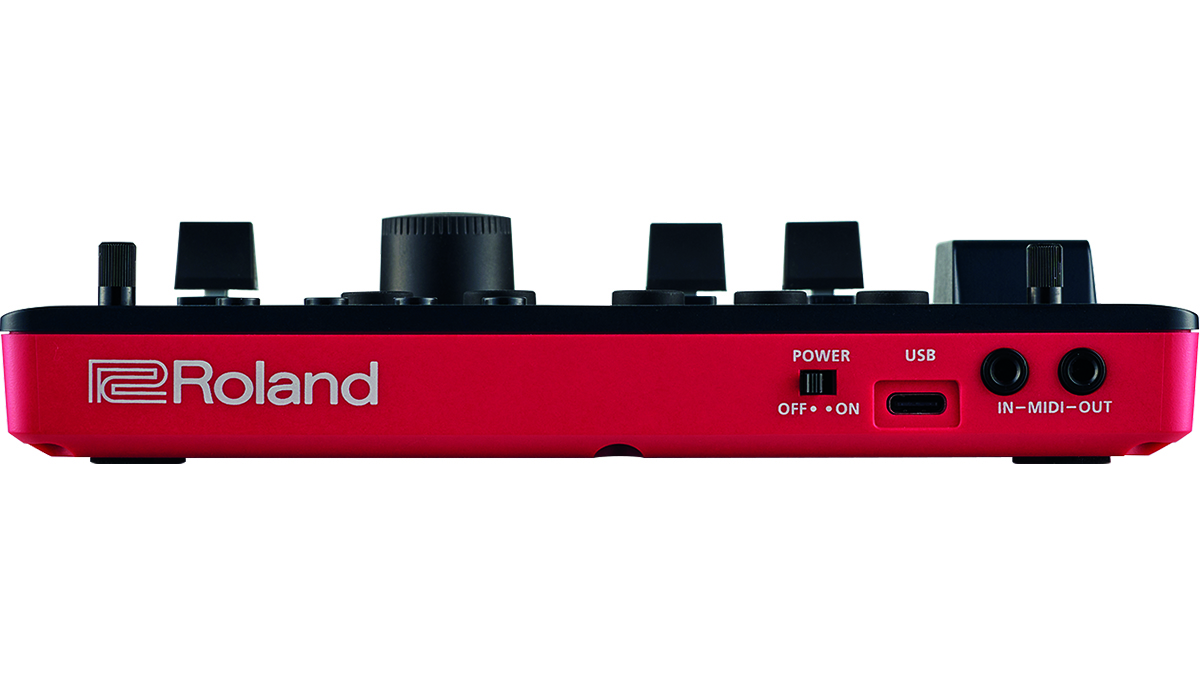
The diminutive size means that menu-diving and key combinations are needed
The E-4 is capable of great results, both as a live processor or studio tool for creating weird tempo-synced vocal loops and effects. However, like the other two units on review, its diminutive size (and restricted panel space) means that menu-diving and key-combinations are needed to access quite a few parameters – most of which are not written on the front panel. The Looper might also have been easier to use with a couple more buttons.
An issue that was noticeable on all three units, but is perhaps most relevant to the E-4 when being used live, is the amount of digital noise coming from the audio output when powered via USB.
MusicRadar verdict: Whether a vocalist or merely a ‘vocal dabbler’, this little unit could provide inspiration if you want to add unusual vocal touches live or in the studio.
Roland Aira Compact Series: The web says
"Roland is bringing some serious firepower to the world of tiny, dirt-cheap music gear."
Engadget
Roland Aira Compact Series: Hands-on demos
RolandChannel
loopop
Red Means Recording
sonicstate
Roland Aira Compact Series: Specifications
- COMMON FEATURES: Audio, MIDI, and sync I/O plus AIRA Link. Class-compliant USB-C audio/MIDI interface. Lithium-ion battery with up to 4.5 hours of operation per charge. Connect to other AIRA Compacts and standard MIDI devices with optional BOSS TRS MIDI cables.
- CONTACT: Roland
“I used everything I knew about music”: How Green Day exceeded expectations with their most ambitious song
YouTube just added AI tools that makes musicians, library music and video editors redundant
“Every one of them said yes without hesitation": Hank Marvin and Roger Taylor have just remade a '60s classic for charity
